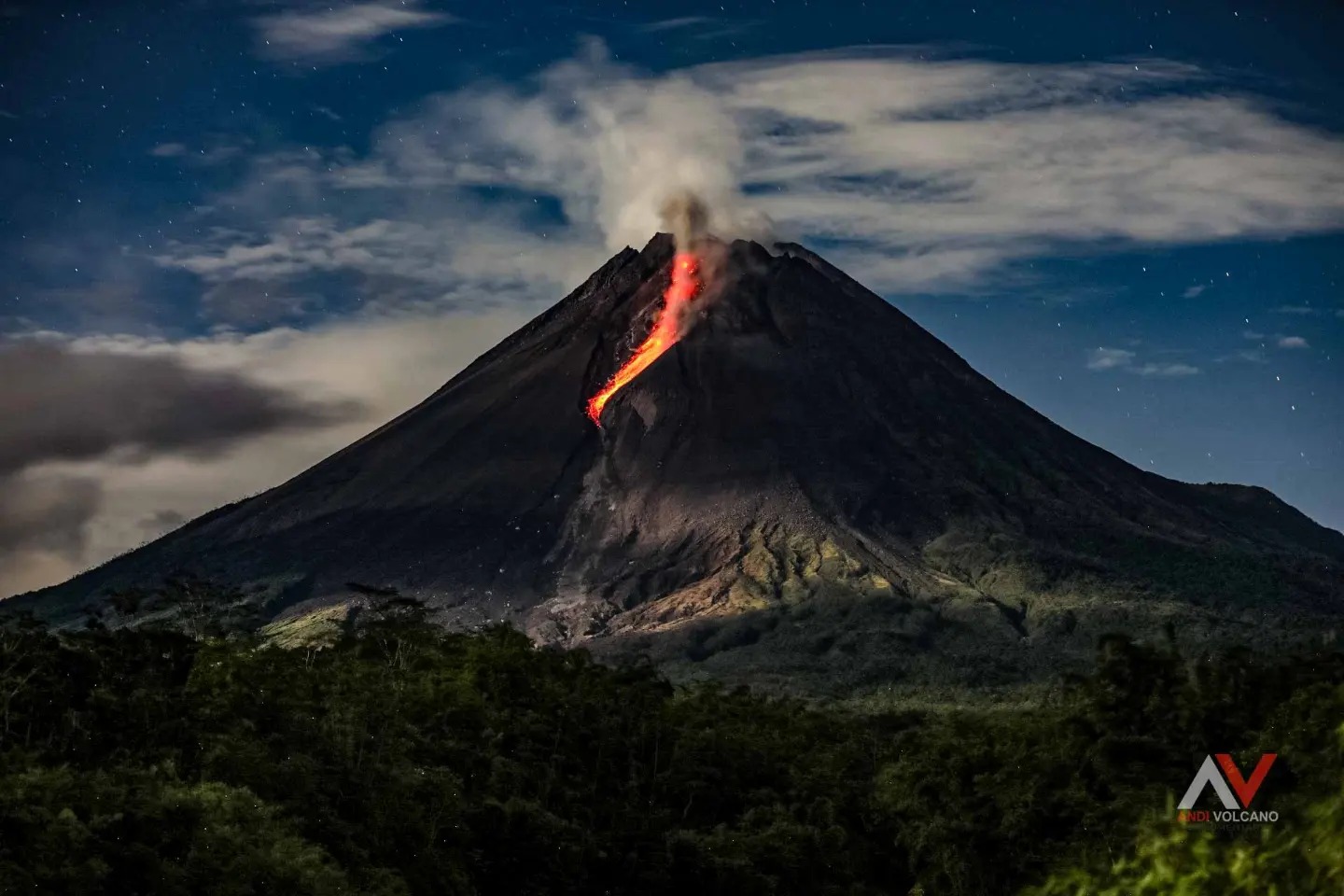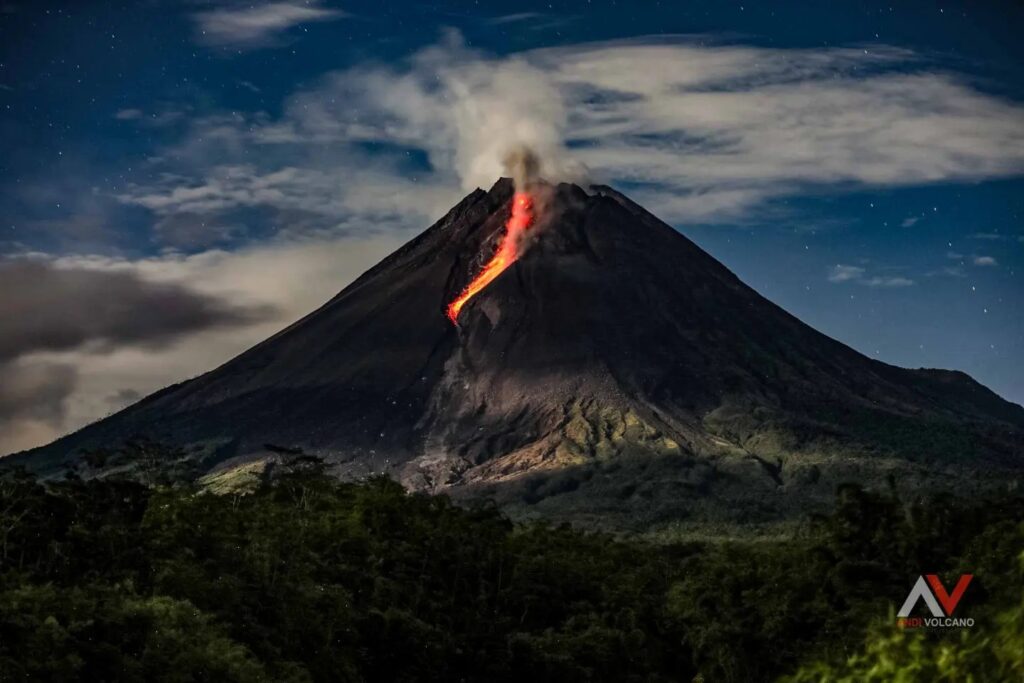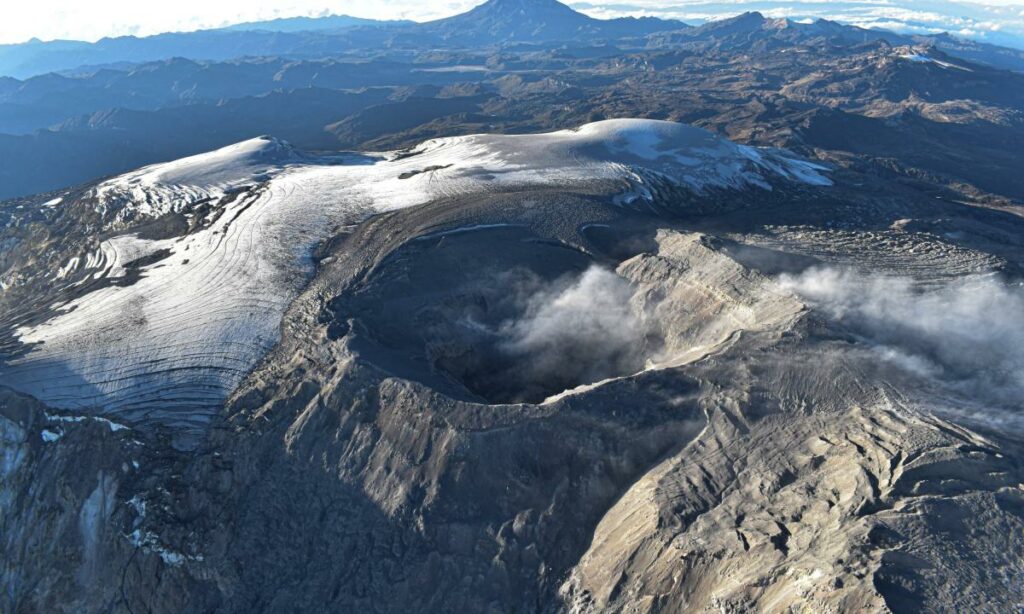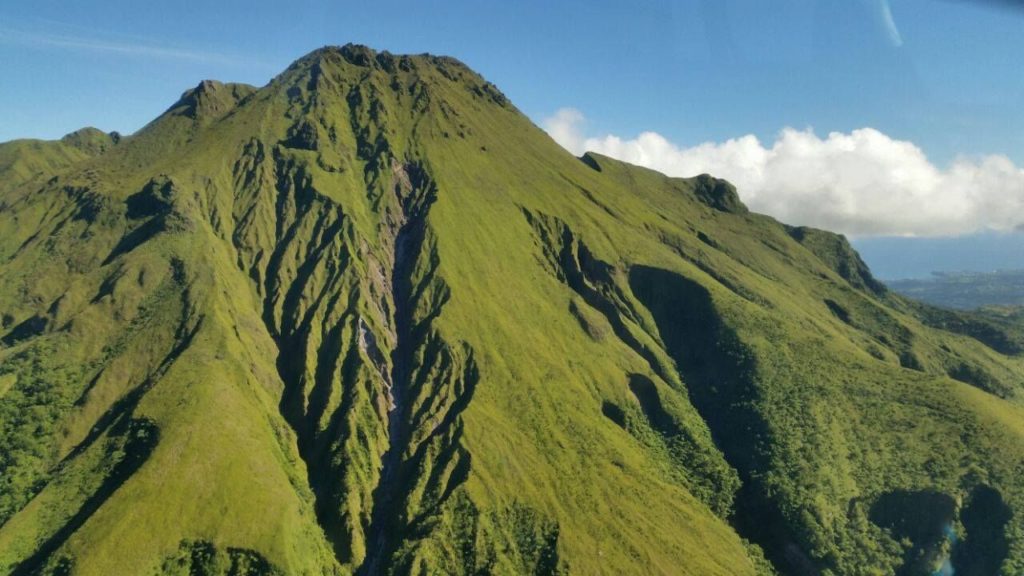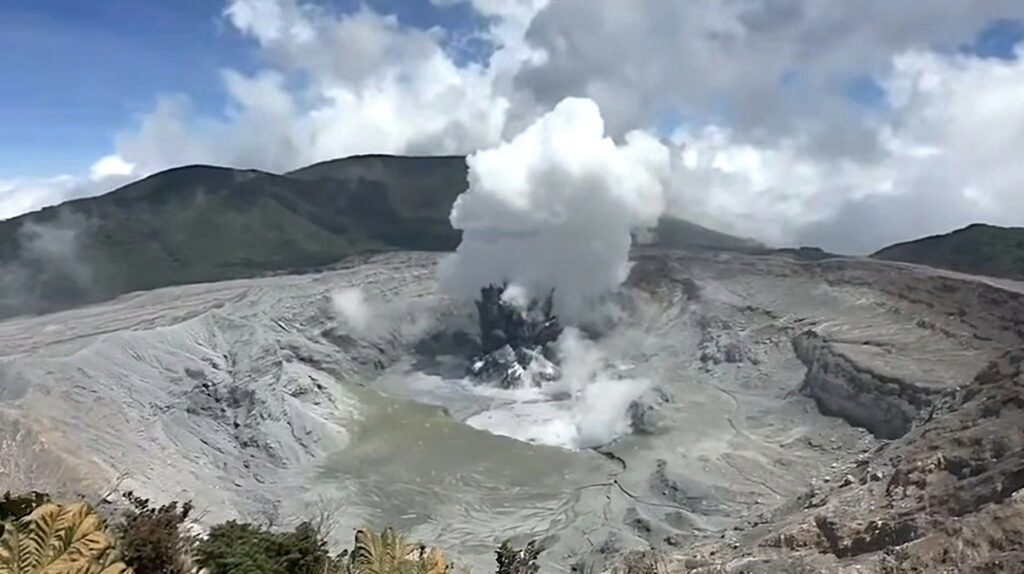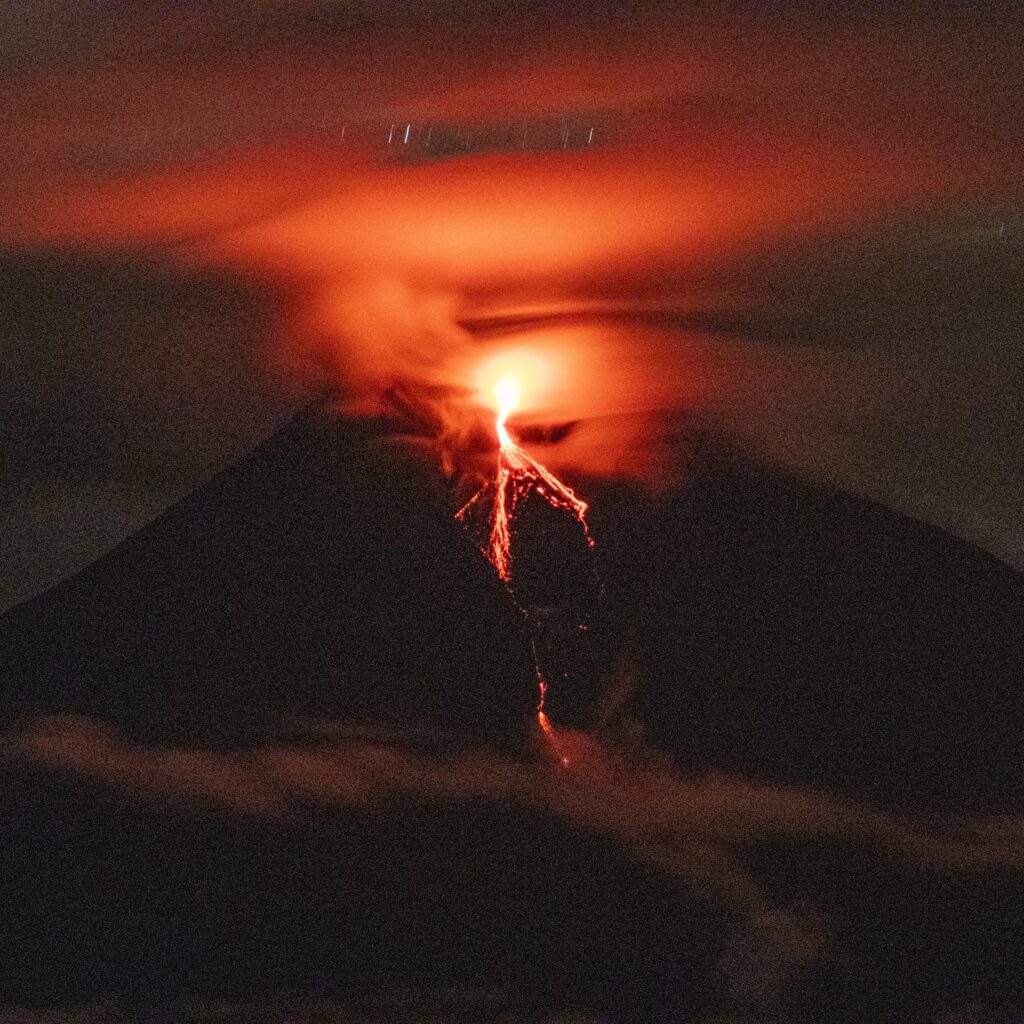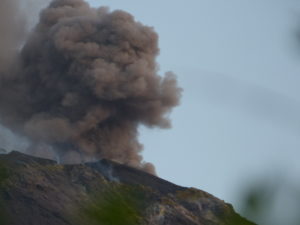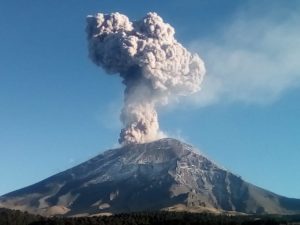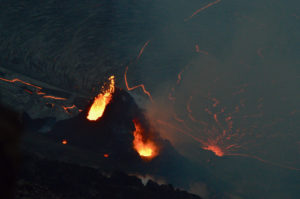April 06 , 2025.
Indonesia , Merapi :
MOUNT MERAPI ACTIVITY REPORT, March 27 to April 3, 2025
OBSERVATION RESULTS
Visual
The weather around Mount Merapi is generally sunny in the morning and evening, while it is hazy during the day. White smoke, thin to thick, low to moderate pressure, with a smoke height of 25 m was observed from the Mount Merapi Badaban observation post on April 3, 2025, at 08:00 WIB.
This week, lava avalanches were observed 28 times upstream of the Bebeng River up to a maximum of 1,800 m, 50 times upstream of the Krasak River up to a maximum of 1,800 m, and 37 times westward upstream of the Sat/Putih River up to a maximum of 1,800 m. The morphology of the southwest dome has undergone slight changes due to lava flow activity. No significant morphological changes have been observed for the central dome. According to an analysis of aerial photos dated March 11, 2025, the volume of the southwest dome is 3,626,200 m³. Meanwhile, the volume of the central dome is measured at 2,368,800 m³.
Seismicity:
This week, Mount Merapi seismicity recorded:
1 shallow volcanic earthquake (SV),
1,023 multiphase earthquakes (MP),
1,050 avalanche earthquakes (RF),
20 tectonic earthquakes (TT).
The intensity of earthquakes this week was higher than last week.
Deformation
Deformation of Mount Merapi monitored using EDM this week shows an average shortening rate of the thrust distance of 0.3 cm/day.
Rain and Lahars
This week, it rained at the Mount Merapi observation post, with the highest rainfall intensity of 29 mm/hour for 50 minutes at the Babadan post on April 2, 2025. There were no reports of additional discharge or lahars in rivers originating from Mount Merapi.
Conclusion
Based on the results of visual and instrumental observations, it is concluded that:
Mount Merapi’s volcanic activity is still quite high in the form of effusive eruptions. The activity status is defined as « SIAGA » level.
Source : BPPTKG
Photo : Andi Volcanist.
Colombia , Nevado del Ruiz :
Manizales, April 1, 2025, 5:30 a.m.
Monitoring the activity of the Nevado del Ruiz volcano, the Colombian Geological Survey (SGC), an entity affiliated with the Ministry of Mines and Energy, reports that:
During the week of March 25-31, 2025, the volcano continued to exhibit unstable behavior. Compared to the previous week, the main variations in the monitored parameters were:
– Seismicity related to fluid dynamics in volcanic conduits decreased in the number of recorded earthquakes and in the seismic energy released, with the exception of long-duration signals, which showed a slight increase. The energy levels of the seismic signals ranged mainly from low to moderate. Using cameras (conventional or thermographic) used to monitor the volcano, it was possible to confirm some continuous and pulsed ash emissions associated with seismic signals. Changes in the apparent temperature of the emitted material were also observed in relation to these ash emissions.
– Seismic activity associated with rock fracturing processes within the volcanic edifice decreased both the number of recorded earthquakes and the seismic energy released. Seismic activity was mainly located in the Arenas crater and on the northeast and southwest flanks, at distances less than 4 km from the crater, and in the west and northwest sectors of the volcano, at distances up to 14 km from the crater. The depth of the earthquakes ranged from less than 1 km to 10 km from the volcano’s summit. The largest earthquake of the week occurred on March 29 at 6:55 p.m., with a magnitude of 1.4, located 9 km west of the crater and 4 km deep. Additionally, low-energy seismic activity was recorded, linked to the activity of the lava dome (protuberance or mound) located at the crater floor.
– The emission of water vapor and gases, primarily sulfur dioxide (SO₂), into the atmosphere through the Arenas crater was variable. Estimated daily SO₂ outgassing flux values showed a slight decrease compared to the previous week, largely due to unfavorable atmospheric conditions for data collection. Satellite monitoring, which is being conducted to complement the assessment of this parameter, continues to show significant SO₂ releases.
– The vertical height of the gas column remained mainly below 1000 m measured above the volcano’s summit, with a maximum of 1900 m vertically and in dispersion.
This value was estimated during the gas and ash emission on March 25 at 5:44 p.m. The dispersion direction showed a predominant trend toward the southwest and west of the volcano.
– By monitoring thermal anomalies at the floor of Arenas Crater and using satellite monitoring platforms, several reports of low-energy anomalies were obtained.
Source et photo : SGC
La Martinique , Mount Pelée :
Weekly Report, Paris Institute of Earth Physics / Martinique Volcanological and Seismological Observatory
Saint-Pierre, April 4, 2025, at 2:00 PM local time (GMT-4)
Volcanic activity decreased this week, with one earthquake of volcanic origin observed.
Between March 28, 2025, at 4:00 PM (UTC) and April 4, 2025, at 4:00 PM (UTC), the OVSM recorded:
One low-energy volcano-tectonic earthquake. This earthquake was clearly identified as originating from one of the well-known seismically active zones on Mount Pelée, located between 1.0 and 1.4 km deep below the volcano’s summit. The superficial volcano-tectonic seismicity is associated with microfracturing within the volcanic edifice, linked to the global reactivation of the volcano observed since late 2018.
This earthquake was not felt by the population.
The previous week, the OVSM had recorded three volcanic earthquakes. As of April 4, 2025, and over the past four weeks, the OVSM has observed a total of 243 volcanic earthquakes, an average of 60 to 61 earthquakes per week.
During phases of volcanic reactivation in volcanoes similar to Mount Pelée, seismic activity of varying intensity and frequency is common.
For more details on observations and interpretations of volcanic activity over the longer term, refer to the OVSM’s monthly bulletins.
The alert level is currently YELLOW: vigilance.
Source : OVPF/IPGP
Photo : pinterest
Costa Rica , Poas :
ERUPTION REPORT – OVSICORI-UNA
Location: N10.20 W84.23
Massif Height: 2687 m (8813 ft)
Date: April 5, 2025 Time: 00:00
Plume Height (above crater):
1640 ft (500 m)
Plume Observation Source:
Seismic and Acoustic Stations
Observed Activity:
The Poás eruption continues. Ash emission is continuous and degassing remains high. The volcano is experiencing eruptive pulses that may rise higher than the « normal » observed yesterday at 12:52 PM despite a low-amplitude seismic signal.
There is no visibility. The plume is rich in ash and is dispersing southwest. The plume has a « normal » height of 500 m above the crater, but the pulses can reach a higher height (approximately 3,000 m yesterday).
Activity Level:
CAUTION.
Source : Ovsicori
Photo : Rod Cortes / FB
Ecuador , Sangay :
DAILY STATUS REPORT OF SANGAY VOLCANO, Saturday, April 5, 2025.
Information Geophysical Institute – EPN.
Surface Activity Level: Moderate, Surface Trend: No change
Internal Activity Level: Moderate, Internal Trend: No change
Seismicity: From April 4, 2025, 11:00 a.m. to April 5, 2025, 11:00 a.m.:
Seismicity:
Below is the count of seismic events recorded at the reference station.
Explosion (EXP): 127
Precipitation/Lahars:
No rainfall was recorded in the volcano area. **Heavy rainfall could remobilize accumulated material, generating mud and debris flows that would cascade down the volcano’s flanks and flow into adjacent rivers.
Emission/Ash Column:
Due to weather conditions, it was not possible to observe gas or ash emissions using the surveillance camera network or the GOES-16 satellite system. Meanwhile, the Washington-based VAAC agency released a report of ash emissions at a height of 1,500 meters above the crater level and in a west-southwest direction.
Gas:
The Mounts satellite system recorded 46.50 tons of sulfur dioxide (SO2), measured on 04/04/2025 at 13:41 TL.
Observation:
From yesterday afternoon until the closing of this report, the volcano remained completely cloudy.
Alert Level: Yellow
Source : IGEPN
Photo : Cristopher Cardenas / FB.

